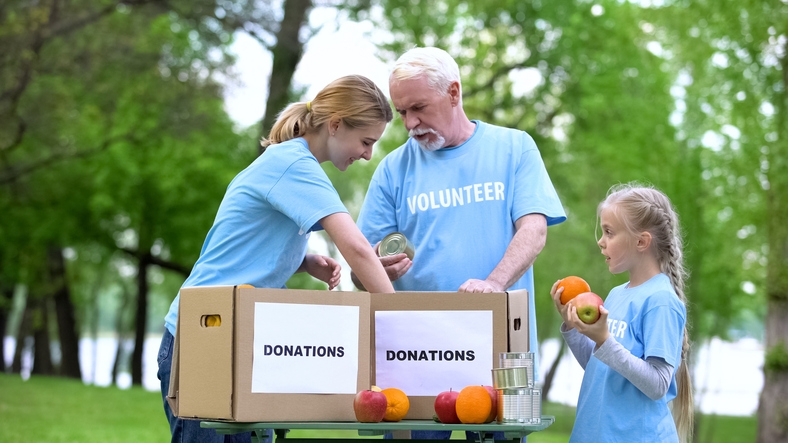One Person. One Vision. One Amazing Event: 10 Steps Charity Event Planning Without a Team
Learn how to effectively plan a charity event that maximizes impact and engagement. Discover practical tips and strategies to make a difference. Read more!

Introduction: You Can Plan a Successful Fundraising Event Without a Team
Organizing a nonprofit fundraising event by yourself can feel overwhelming—but it’s entirely doable with strategic planning, the right tools, and a step-by-step approach. Whether you’re working with limited resources, no formal event team, or simply taking the lead solo, this guide will walk you through the key steps to plan, promote, and execute a successful charity event that raises awareness and more money for your cause.
From building a detailed budget and securing event sponsors to managing volunteer coordination and email outreach, we’ll cover everything you need for effective fundraising event planning—even if it’s your first time.
1. Define Your Fundraising Goal and Purpose to Guide All Event Planning Decisions
Before any planning begins, get crystal clear on your fundraising goals. Is your primary goal to raise awareness, raise money, or attract new supporters? Many nonprofits lose focus by trying to do too much. Your purpose should guide every decision moving forward—from your event theme to your outreach tactics.
Action Steps:
- Define what success looks like (e.g., raise ₹5,00,000, get 200 event attendees, attract 3 corporate sponsors)
- Clarify your message: Why should potential donors care?
- Make your cause personal: Use storytelling to connect with your target audience
- Identify the most compelling event ideas that will excite your target audience and help you raise as much money as possible within your capacity.
Tools: Google Docs (for planning), Trello or Notion (for organizing important tasks)
2. Choose the Best Event Format and Ideas to Match Your Audience and Capacity
Not all nonprofit events require a ballroom and banquet tables. Choose a format that fits your capacity, budget, and audience. Virtual events, hybrid formats, or community-based gatherings can be just as impactful as gala dinners—especially for solo organizers.
Popular Solo-Friendly Formats:
- Online auction or trivia night
- Walkathon or fun run with decentralized participation
- “Dinner Party Fundraiser” hosted in your home or a community space
- Educational webinars with speaking opportunities from a special guest
Tips: Consider your target donors' preferences, tech-savviness (especially for older donors), and your local community's availability.

3. Build a Solid Event Budget to Maximize Impact and Minimize Stress
Creating a detailed budget is a must, especially when you're planning alone. It will help you allocate funds, avoid last-minute surprises, and track how much money you're spending vs. raising.
Include:
- Venue or platform costs
- Marketing materials (digital + print)
- Catering or refreshments (if in-person)
- Liability insurance and licenses
- Guest speaker or entertainment fees
- Event tech (Zoom, donation platforms, microphones, etc.)
Tools: Google Sheets, Airtable, or budgeting templates
Pro Tip: Research historical data from similar events (within your nonprofit or other organizations) to benchmark your event budget.
4. Break Down Your Planning Process Into Manageable Tasks and Deadlines
Solo organizing requires serious planning process discipline. Map out a full event timeline that includes all important details, from early outreach to silent auctions, donation tracking, and volunteer reminders.
Your Timeline Should Include:
- Major due dates for tasks (e.g., book venue by Sept 1, launch ticket sales by Oct 1)
- Reminders for promotional pushes (e.g., 3 email campaigns, 2 social media engagement drives)
- Setup and teardown plans
- Buffer days for unexpected issues
Tools: Asana, Trello, or Notion with color-coded task lists
Checklist Example:
- Secure event sponsors
- Finalize ticket tiers and ticket price
- Upload RSVP or event registration form
- Confirm volunteer coordination needs
- Finalize silent auctions and prize logistics
- Share teaser content with local businesses to generate interest
5. Secure Event Sponsors and Board Members in Mutually Beneficial Ways
Even solo planners can attract meaningful event sponsors by offering perks like logo placements, speaking opportunities, or marketing materials exposure.
Steps to Get Sponsors:
- Use your personal network first
- Create simple sponsorship packages at different price points
- Highlight the sponsor’s visibility (social media, banners, emcee shoutouts)
- Emphasize your nonprofit’s mission and how the sponsor’s support will help you raise more funds
Pro Tip: Show how many event attendees you expect and what types of target audience members(e.g., local professionals, families, corporate reps) they can reach.
6. Choose Tools That Help You Accept Donations and Sell Tickets With Ease
Use a platform that makes it easy to accept donations and sell tickets online. Bonus if it offers integrations with email, CRM, and social media tools.
Top Features to Look For:
- Mobile-friendliness
- Auto-receipts and donation summaries
- Peer-to-peer fundraising options
- Livestream or hybrid-ready if needed
Popular Tools: Givebutter, Zeffy, Donorbox, or your nonprofit’s existing CRM
Tip: Enable recurring donations and add a donation upsell after the ticket purchase page to raise more funds.

7. Promote Your Fundraising Event with Smart, Time-Saving Strategies
You don’t need an agency—just a smart system. Focus on channels where your target donors already spend time.
Promotion Channels:
- Social media campaign: Create 3–4 weeks of content in advance using Canva
- Email outreach: Use Mailchimp or Brevo to send segmented invites, updates, and reminders
- Traditional media: Local radio, community newsletters, or posters in high-traffic areas
- Phone calls or WhatsApp blasts to loyal supporters and past donors
- Collaborations with local businesses and shops
- Local community centers or libraries displaying posters
Create Urgency with:
- Early bird pricing or limited ticket tiers
- Exclusive giveaways for first 20 registrations
- Exclusive raffle entries or bonus silent auction credits for early sign-ups
Pro Tip: Schedule 1 hour/day to manage promotion. Use templates, auto-schedulers, and repurpose content to stay organized.
8. Prepare Every Event Detail for a Seamless Day-of Execution
With all the event details planned out, you’ll want to run through every aspect like a checklist.
Essentials:
- Double-check venue/tech setup
- Print or prepare event materials (badges, signs, welcome kits)
- Prep for check-in (digital or printed guest list)
- Keep a printed backup of your event timeline and important tasks
Tip: Ask a friend or board member to be “on call” in case of emergencies. Even a little backup can be priceless.
9. Follow Up With Donors and Track Every Dollar Raised
The real magic of nonprofit fundraising happens after the event. Thank your donors, recap your impact, and prepare for your next charity event.
Steps:
- Email a thank-you with funds raised summary and photos
- Offer additional resources or updates about your cause
- Ask for feedback via a short form
- Tag attendees in social media recap posts
- Share how their contributions made a difference
- Don’t forget to collect testimonials or short feedback videos from attendees—these build excitement and credibility for your next event and help refine your solid plan for future initiatives.
Track Metrics:
- Ticket sales vs. attendance
- More donations from new vs. returning donors
- Social media engagement and shares
- Total funds raised vs. event budget
- Number of new donors vs. returning ones
- Signups or interest generated for your next event
Pro Tip: Use this data for your next fundraising event planning cycle.
10. Build a Contingency Plan to Handle Event Day Surprises
Even the most organized fundraising event planning can run into roadblocks—bad weather, tech issues, no-shows, or last-minute cancellations. Having a clear contingency plan ensures your fundraising event stays on track, maintains momentum, and still hits your fundraising goals.
What to Include in Your Contingency Plan:
- Backup venue or virtual pivot: If your in-person venue becomes unusable, have a virtual option or backup location in place.
- Extra volunteers or support contacts: Identify 1–2 backup people (e.g., board members, friends, or family) who can step in if needed.
- Printed materials & checklists: Always bring printed copies of critical event planning materials like specific tasks and steps outlined for different staffs, in case your device fails.
- Emergency contact list: Include venue staff, caterers, A/V tech, and platform support (for virtual events).
- Weather plans: For outdoor events, have tents, ponchos, or an indoor alternative prepped.
Tips for Solo Organizers:
- Prepare a simple “What if…” guide with possible issues and your go-to response.
- Use color-coded checklists for event materials (e.g., red = critical, yellow = optional).
- Schedule a 15-minute buffer before key moments (like a silent auction close or speech start).
Pro Tip: Add a contingency line to your event budget (5–10%) for unplanned expenses, like extra supplies, transportation, or extended venue hours.
By preparing for the unexpected, you’ll not only protect your funds raised and donor experience—but also build trust for your next event.

Final Thoughts: With a Solid Plan and the Right Tools, You Can Host a Powerful Fundraising Event Alone
Even without a full team, you can host a successful event that raises money, attracts potential donors, and creates real impact for your nonprofit organization. With careful planning, task management, and a commitment to your cause, your next charity event can exceed expectations.
Many nonprofits begin with one passionate person. You have the tools and roadmap. Now go turn your solo vision into a successful fundraising event that everyone remembers.
Want an easier way to manage registration, ticketing, donations, and sponsor tracking in one platform? Try for streamlined nonprofit event planning.
More Event Marketing and Promotion












